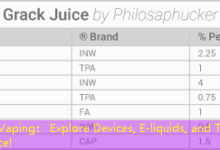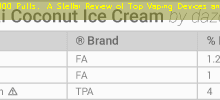THC H: Exploring the Intersection of THC and Vaping Technology
In recent years, the landscape of cannabis consumption has undergone a dramatic transformation, predominantly driven by advancements in technology and changing societal attitudes towards marijuana. Among the most significant innovations is the rise of vaping, particularly in relation to THC—tetrahydrocannabinol, the psychoactive component of cannabis. This article delves into the intricate relationship between THC and vaping, exploring how electronic devices are reshaping the way users experience this potent compound, and the implications of these developments for both consumers and the cannabis industry at large.

The Evolution of Cannabis Consumption
Historically, cannabis was consumed in various forms, ranging from traditional methods such as smoking dried flower to more innovative approaches like edibles and oils. However, the introduction of vaporization has presented a new paradigm. Vaping offers a method that many argue is cleaner and more efficient than smoking. When THC is vaporized, it enables users to inhale cannabinoids without many of the harmful byproducts associated with combustion. This shift raises questions about the health implications and user experience of consuming THC via vaping devices.
The Mechanism Behind Vaping THC
Vaping THC typically involves a device that heats cannabis oil or flower to a temperature that releases potent cannabinoids in vapor form. The key components of these devices include the heating element, a power source, and the chamber where the THC is stored. The heating element can be a coil or a ceramic component, warming the material until it reaches a point of vaporization without burning. This process not only reduces harmful carcinogens but also preserves the aromatic terpenes found in cannabis, contributing to a more flavorful experience.
Different Types of THC Vaping Products
The market has seen a variety of products tailored for THC consumption through vaping. These include:
– Pre-filled vape cartridges: Convenient and user-friendly, these cartridges come with a battery and are designed for portability.
– Disposable vape pens: Offering a simple, no-fuss option for users, these devices are ideal for beginners and casual consumers.
– Vape mods: These advanced devices allow users to adjust settings like temperature and airflow, providing a customized experience.
Each of these products caters to different user preferences, highlighting the growing demand for versatility in cannabinoid consumption.
The Impact of THC Concentration on Vaping Experience
One salient aspect of vaping THC is the concentration of cannabinoids present in the products. Many vape cartridges contain high levels of THC, sometimes exceeding 90%. While this can lead to intense psychoactive effects, it also increases the risk of overconsumption, particularly for inexperienced users. Understanding the potency and appropriate dosage is critical to ensuring a safe and enjoyable vaping experience.
Health Considerations Associated with Vaping THC
While many users perceive vaping as a healthier alternative to smoking, it is not without potential health risks. The popularity of vaping products has raised concerns about lung health, especially following reports of vaping-associated lung injury (VALI). Research continues to evolve regarding the long-term effects of inhaling vaporized substances. Consumers must remain informed and vigilant about the products they choose, employing due diligence when selecting brands and formulations.
Regulatory Landscape for THC Vaping
As vaping technology progresses, so too does the regulatory framework governing these products. In many jurisdictions, laws surrounding cannabis and THC vaping are still in flux, with some regions embracing legalization while others maintain stringent restrictions. Consumers should be aware of the legal status of THC products in their area, as well as any labeling requirements that may exist.
Consumer Safety and Quality Assurance
Given the proliferation of THC vaping products on the market, ensuring safety and quality has become paramount. Consumers are encouraged to seek products that have undergone third-party testing, which verifies potency and screens for harmful contaminants. Transparency from manufacturers regarding ingredients and production processes fosters a safer environment for consumers, ultimately encouraging responsible use.
Case Studies: User Experiences with THC Vaping
To illustrate the varied experiences with THC vaping, we can examine two case studies.
Case Study 1: The Beginner User
A new user explores vaping THC for the first time through a disposable pen. Initially overwhelmed by the potency, they experience heightened effects but learn to appreciate the controlled doses provided by the device.
Case Study 2: The Experienced Connoisseur
An experienced cannabis user prefers a customizable mod system. They value the ability to adjust settings and experiment with different strains, emphasizing the importance of terpenes in their overall experience.
| User Type | Experience Level | Preferred Product | Key Focus |
|———————–|———————–|————————-|———————–|
| Beginner User | Unfamiliar with THC | Disposable vape pen | Dosage control |
| Experienced Connoisseur| Knowledgeable about THC| Customizable mod | Flavor and potency |
Addressing Common Questions About THC Vaping

What are the primary advantages of vaping THC compared to traditional smoking?
Vaping THC offers several advantages, including reduced exposure to harmful byproducts of combustion, enhanced flavor retention through the preservation of terpenes, and greater control over dosage. Many users also report less odor and a more discreet experience.
Is vaping THC safe for everyone?
While many users find vaping to be a safer alternative to smoking, it may not be suitable for everyone. Those with pre-existing respiratory conditions or sensitivities should approach vaping with caution. Consulting with a healthcare professional prior to use is always recommended.
How can I identify high-quality THC vaping products?
To identify high-quality THC vaping products, consumers should look for brands that provide transparent labeling, third-party testing results, and clear ingredient lists. Additionally, researching customer reviews and product origin can further guide purchasing decisions.







